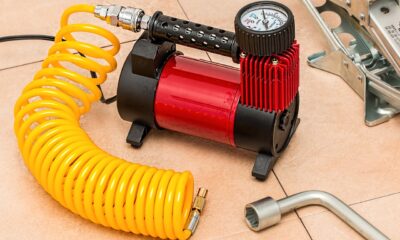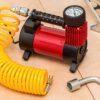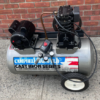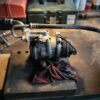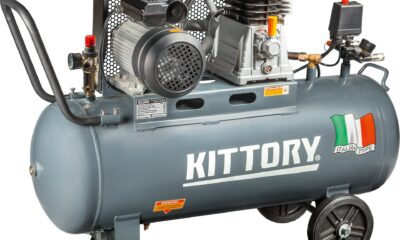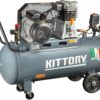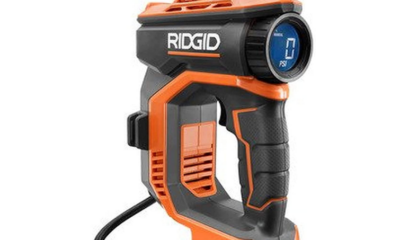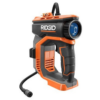If you are wondering how to adjust the air compressor’s pressure switch, you have reached the right place. It sounds complicated, but we can assure you that it is not. Here, we will explain how you can adjust this by following some simple steps.
Let us dive deeper into it.
Adjust Air Compressor’s Pressure Switch
One must know that there are several ways to adjust the compressor pressure switch. The most popular one is the cut-in and cut-out pressure method for adjusting. Let us see what it is:
The Cut-In and Cut-Out Pressure Method
An air compressor has two pressure points built into them- the cut-in and the cut-out. These are two pressures at which the compressor begins and ends its operation. When the compressor hits the cut-out pressure, it will stop and restart when the pressure returns to the cut-in pressure.
Step-By-Step Approach
Follow the instructions below to adjust the pressure switch:
Step 1. Find the Pressure Switch on the Air Compressor
On your air compressor, locate the pressure switch. On smaller air compressors, it is often located on the pressure switch. However, bigger air compressors could be controlled using a central compressor controller.
First, take off the cap. You’ll notice the motor and power supply connection points. There will also be one or two huge springs and one smaller spring. The spring pressure can be modified by rotating the nut on the rod end.
Now, we will see the cut-in and cut-out pressure adjustments. Simply put, these are the two pressures where the compressor begins and ends. When it hits the cut-out pressure, the compressor will shut off and restart when the pressure returns to the cut-in pressure. Generally, there should be a pressure difference of at least 1 bar, which equals 14 psi.
Step 2. For Cut-In Pressure Adjustment
The compressor will abruptly start and stop numerous times if the difference between the two pressures is too low. This can even damage the pressure switch, burn out the compressor motor, and put additional strain on the other compressor parts. Follow these steps:
- Begin by setting the desired cut-in pressure, considering the minimum pressure required for your application. Remember, clockwise rotation increases the pressure, while counterclockwise rotation decreases it.
- Let some air escape by slowly opening a drain.
- Keep an eye on how the pressure gradually decreases.
- Wait for the compressor to start. Make a note of the pressure, as this is the pressure at which the cut-in occurs. Using the large set screw, adjust the cut-in pressure.
- Turn off the drain valve.
- The compressor will continue to operate until the cut-out pressure is achieved.
Step 3. For Cut-Out Pressure Adjustment
- Record and write down the pressure at which the machine stopped the last time you ran it.
- Adjust the cut-out pressure using the appropriate adjustment screw or nut.
- Ensure that the cut-out pressure is set higher than the cut-in pressure by the desired pressure differential.
- Adjust the differential pressure as needed, and turn anticlockwise to increase for the most elevated pressure or anticlockwise to decrease for the lowest pressure.
- Wait until the pressure drops low enough to activate the compressor after opening the drain valve.
- Turn off the drain valve.
- Then, wait for the compressor to halt and examine the cut-out pressure.
- Repeat this cycle again.
Step 4. Testing and Fine-Tuning
After adjusting, turn on the air compressor and monitor the pressure gauge. Check that the compressor starts and stops within the desired pressure range. Test the switch using a calibrated pressure gauge or a multimeter. If fine-tuning is required, do so.
Conclusion
To summarize, the pressure switch plays a crucial role in the operation of air compressors, determining when the compressor starts and stops based on preset pressure levels. Properly adjusting the pressure switch is essential for maintaining optimal performance and preventing unnecessary wear and tear on the compressor.
If you are unsure about the adjustment process, it is advisable to seek professional assistance or contact the manufacturer for guidance.
FAQs
1. Can the process go from cut-out to cut-in?
No, the process must be cut-in pressure first and then cut-out pressure. It is advisable first to establish the cut-in pressure since the cut-out pressure is calculated as the cut-in pressure plus the pressure differential.
2. How do I know if the pressure switch needs adjustment?
To know when the switch needs adjustment, here are the possible signs that you should notice:
- Your air compressor frequently starts and stops
- Experiences pressure fluctuations
- Fails to reach the desired pressure levels
- If your energy costs are higher than expected.
3. Are air compressor switches adjustable?
Yes, they are adjustable. You can easily adjust by following the cut-in and cut-out methods to fix the pressure switch. If you are facing issues doing so, it is best to contact an expert.













